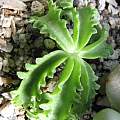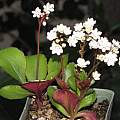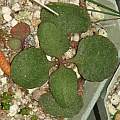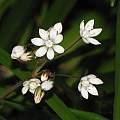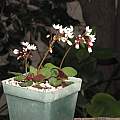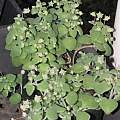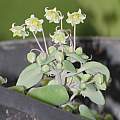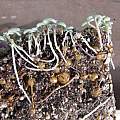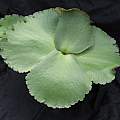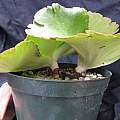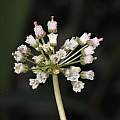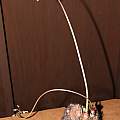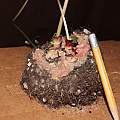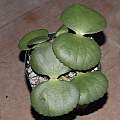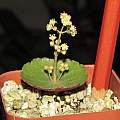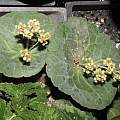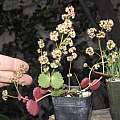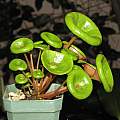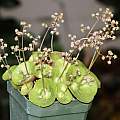Crassula is a large genus of succulent plants genus in the Crassulaceae family that is very popular in cultivation. Most of the 200 or so known species are confined to Southern Africa, especially in the Cape Province. A few are deciduous geophytes restricted to winter rainfall areas. Section Petrogeton contains eight geophytic species with annual herbaceous branches that arise from a tuber, all from winter rainfall areas except Crassula umbraticola from the summer rainfall Drakensberg.
Crassula alcicornis Schönland is a tuberous geophyte commonly called "the antler-leafed crassula" as the paired leaves have an appearance of a pair of deer or elk antlers (alces=the elk, cornu=a horn). It also has the smallest tubular flowers in the section. It was described from material collected by Louisa Bolus from a single population near Citrusdal, Western Cape, South Africa, in 1915, then assumed to be extinct until recently rediscovered. Height range: 30-45 cm. Text and photo by Dylan Hannon and from the referenced article. The photo shows the plant in the collection of a skillful friend, a donation after I lost all but one of the original plants. It was originally collected by John Lavranos, north of Komaggas.
Crassula capensis (L.) Baill. is a tuberous geophyte growing on damp slopes from Clanwilliam to Riversdale, South Africa, and flowering, May-November. Height range: 5-20 cm. Photos by Dylan Hannon of plants, originally ex Silverhill, collected in the Bot River area.
Crassula nemorosa (Eckl. & Zeyh.) Endl. is an erect or sprawling tuberous geophyte that grows in sheltered rocky slopes or crevices (Richtersveld, Western and Little Karoo to the Eastern Cape, South Africa). It flowers mainly June to August. Height range: 5-15 cm. Photos by Dylan Hannon who describes it as a compact stoloniferous species.
Crassula saxifraga Harv. is a tuberous geophyte found on stony slopes or crevices from the Richtersveld to the Eastern Cape, South Africa, flowering April to June. Height range: 15-30 cm. Photos were taken by Dylan Hannon with the following descriptions: Photos are a form from the Hantamsberg, near Calvinia, obtained from Guy Wrinkle in 1999. Note that the flowers appear in the fall just as the leaves start to emerge from the irregular tuber. A survey of web photos shows considerable variation in this species in overall size, flower color, etc.
More photos and text by Dylan Hannon. The first shows the flowers of another plant, also from Calvinia, that is about 1/4 the size of the first plant; the flowers are different in color and shape and are arranged in a branched inflorescence instead of a 'pseudoumbel'. Photo 2 shows a "hybrid" between these forms; it has light pink flowers.
Crassula umbella Jacq. is a tuberous geophyte with kidney-shaped scalloped leaves and white to yellowish green, star-shaped flowers found on sheltered rocky slopes from the Northwest Cape to the Karoo and Eastern Cape, South Africa, flowering July-September. Height range: 15-40 cm. Photos were taken by Dylan Hannon. Photos 1-3 show a form of this species from Kamieskroon. The plant in photo 4 is originally from the Wolfberg, and photos 5-6 show the distinctive cultivar 'Wine Cup'.
